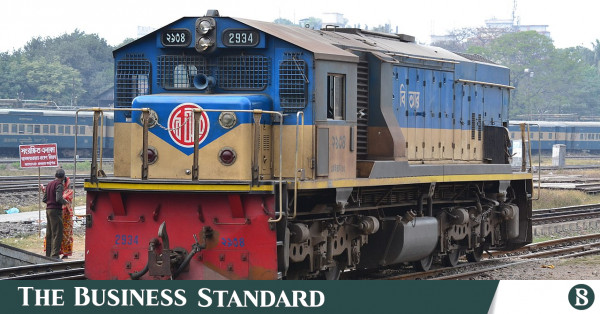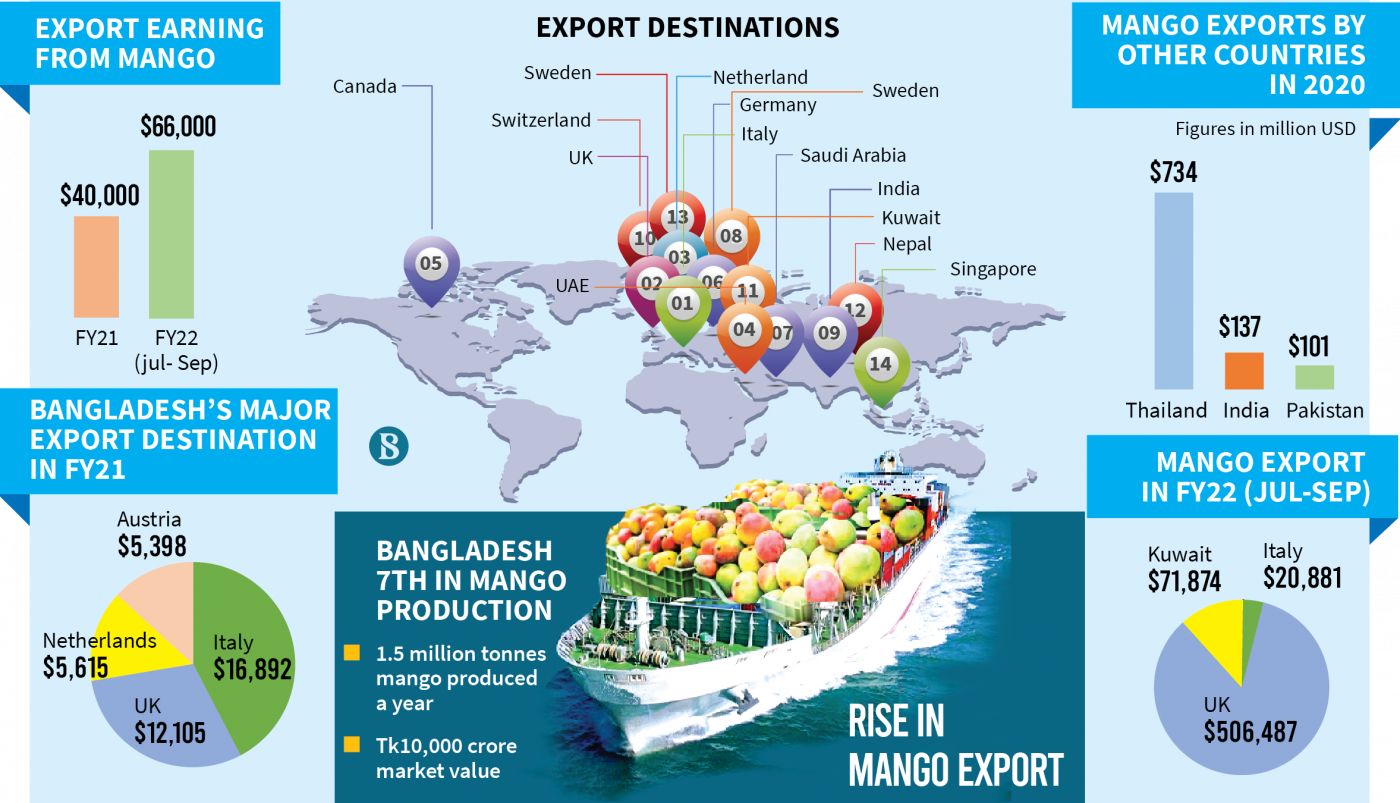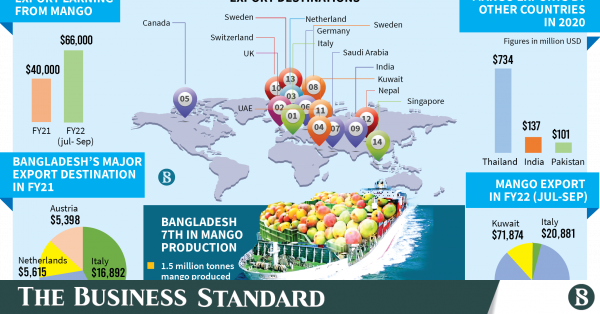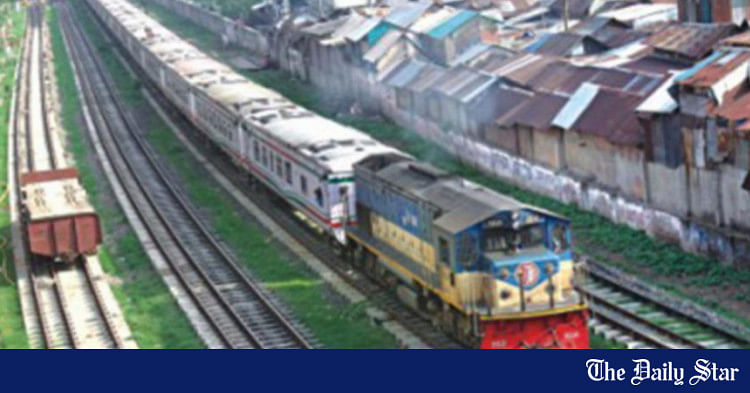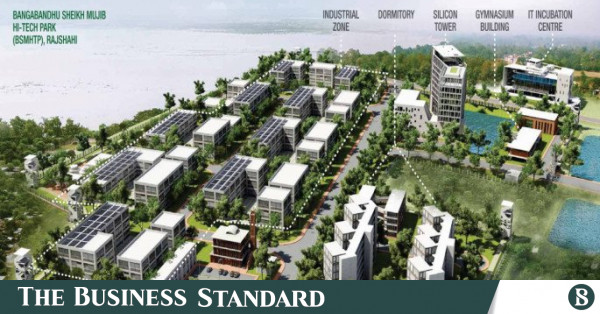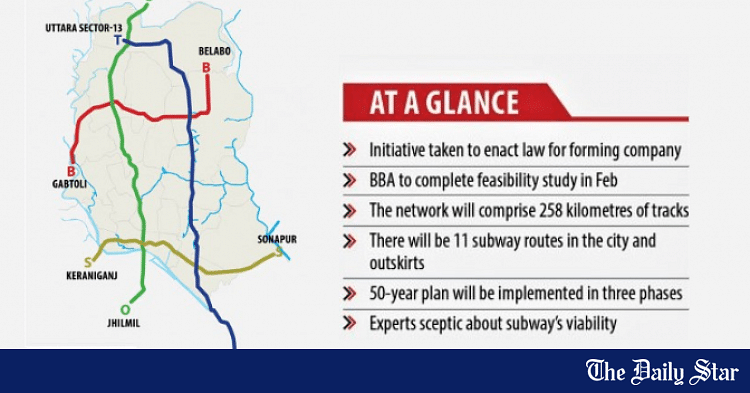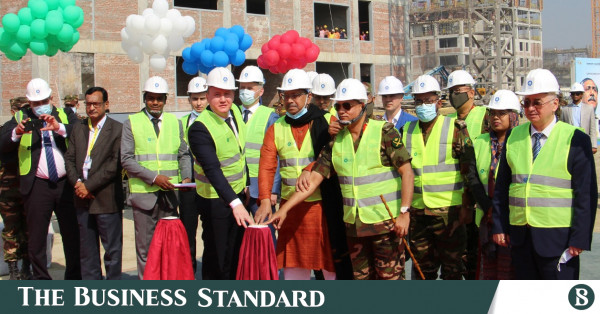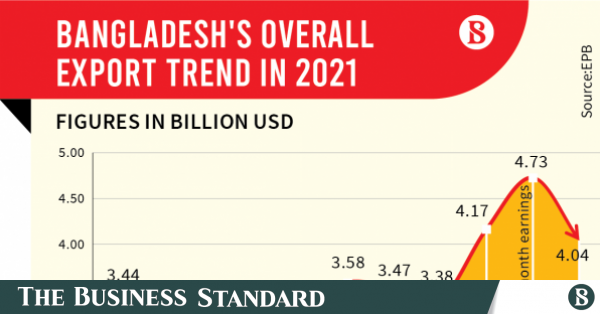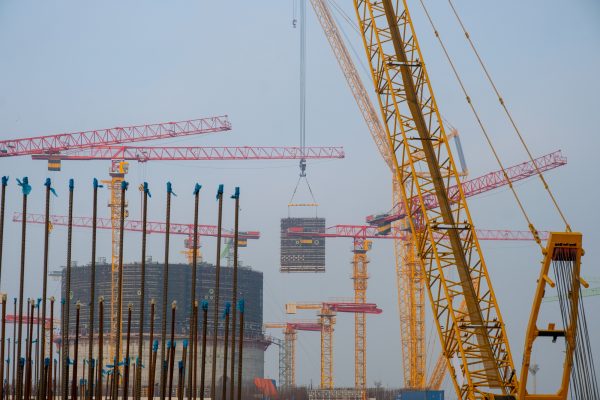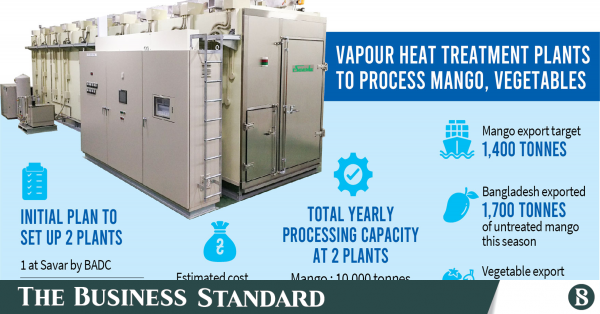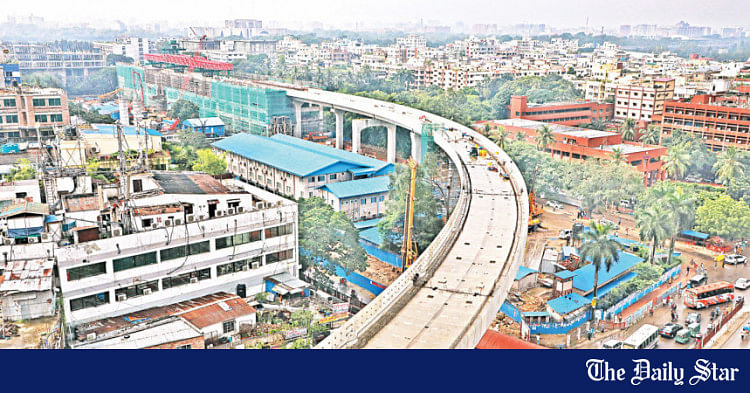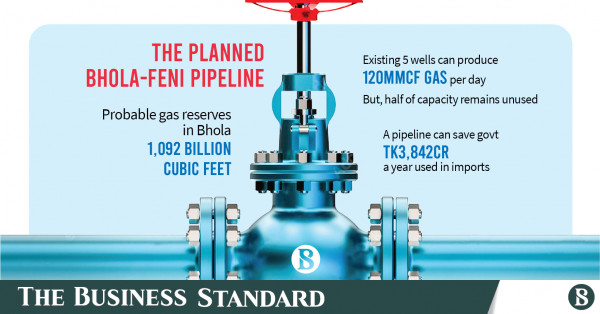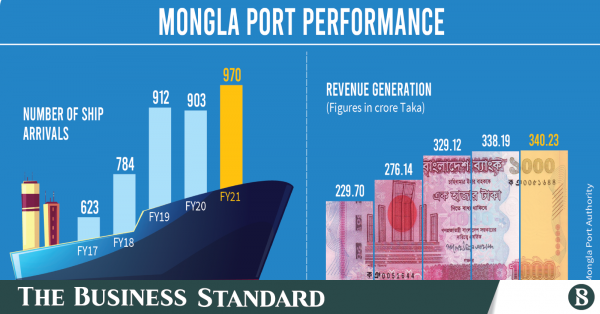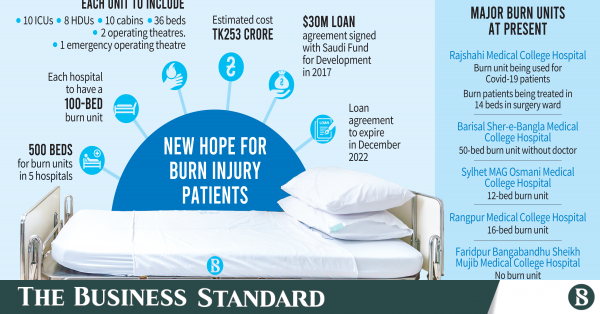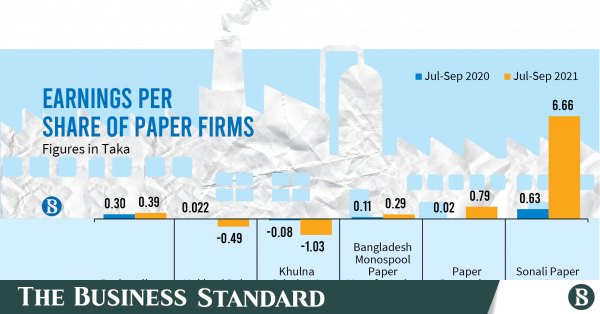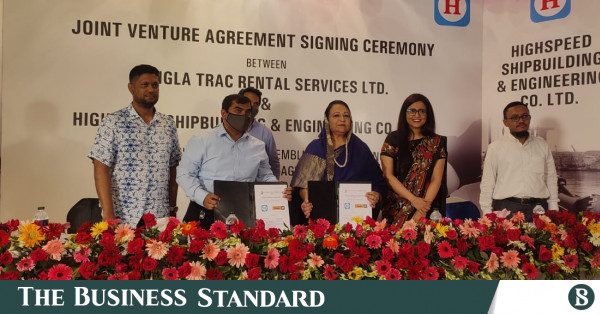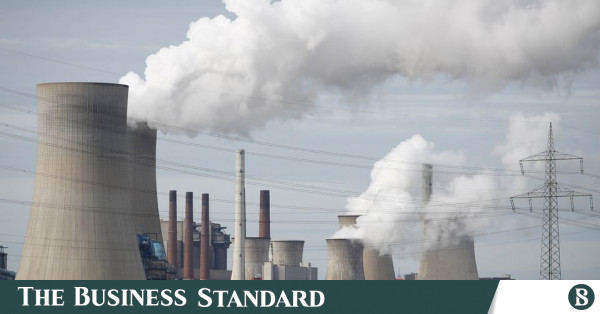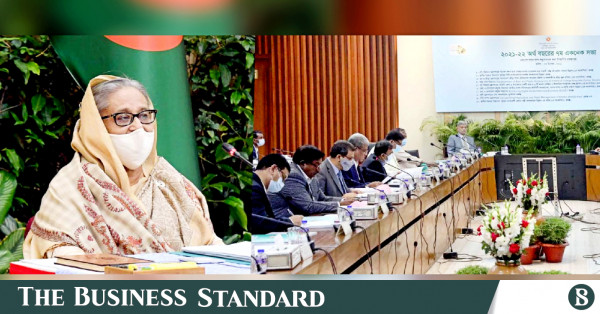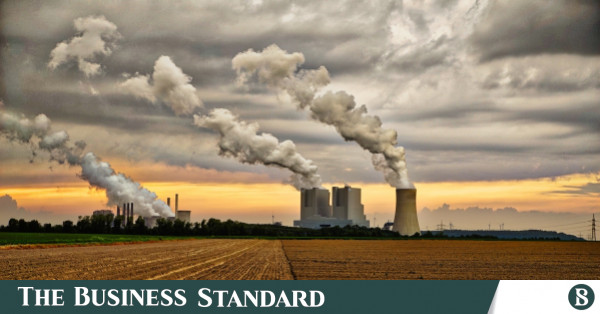DP World, a Dubai-based multinational logistics company, will invest $1 billion in Bangladesh’s supply chain infrastructure, including ports, rail network and inland container terminals, reports UNB.
This is within the scope of the government-to-government agreement entered into in 2019 for public-private participation on infrastructure projects, said a press release of the company on Tuesday.
The assurance came when a high-level delegation of the Bangladesh government led by state minister for shipping Khalid Mahmud Chowdhury, visited Jebel Ali Free Zone and the Jebel Ali Port in Dubai on 21-23 November.
The delegation included Sultana Afroz, secretary and chief executive officer for Public-Private Partnership Authority, Mohammed Mezbah Uddin Chowdhury, secretary, ministry of shipping; and Rear Admiral M Shahjahan, chairman of Chittagong Port Authority and other senior government officials.
During the tour, they also visited the DP World Pavilion at the Expo 2020 Dubai.
The visit represents a key step in reinforcing DP World’s commitment to partner with the government of Bangladesh in enhancing its supply chain infrastructure and processes, it said.
The delegation met Sultan Ahmed bin Sulayem, group chairman and CEO of DP World, Mohammed Al Muallem, executive vice president – office of the chairman DP World, and Rizwan Soomar, CEO and managing director, DP World Subcontinent; and other DP World officials.
The delegation was also briefed on DP World’s range of products and services, which covers every link of the integrated supply chain – from maritime and inland terminals to marine services and industrial parks, as well as technology-driven customer solutions.
The delegation members witnessed demonstration of BoxBay, the new intelligent High Bay Storage (HBS) system, toured the Jebel Ali Free Zone and visited the DP World Cruise Terminal.
Visitors to the five-floor DP World Flow pavilion, which has four main galleries, have an opportunity to explore the movement of commerce around the world that drives the global economy, giving a unique insight into the innovative technology of supply chains.
The pavilion’s FlowLive event programme brings together leaders of governments and commerce to shape the future of world trade, while its education programme seeks to inspire young people to join the logistics industry.
DP World, a Dubai-based multinational logistics company, will invest $1 billion in Bangladesh’s supply chain infrastructure, including ports, rail network and inland container terminals.

en.prothomalo.com
Commerce Minister Tipu Munshi said the government has undertaken a mega project for industrialisation on both sides of the Teesta River.
The Executive Committee of the National Economic Council (ECNEC) has already passed the project worth Tk85billion, the minister said at a scholarship distribution ceremony of late members of Rangpur Division Journalists Association (RDJA).
Speaking as the chief guest at the event, the commerce minister also said that gas connection activities are going on in Rangpur.
Munshi said that work for transforming Saidpur Airport into an international standard one was ongoing, adding the economy of Rangpur was moving forward with various economic activities.
An agriculture university was going to be established soon in Kurigram, he mentioned.
The commerce minister further said that giving scholarships to the children of late journalists was an exceptional initiative.
"I appreciate the initiative taken by Rangpur Division Journalists Association, Dhaka (RDJA). I don't know whether any other journalists' organisations have such initiatives."
Export Readiness Fund General Secretary SM Rashidul Islam echoed the minister's sentiments.
RDJA president Moksedur Rahman Masud said, "We stand beside the family of our late members with a small capacity. We want those capable to support us in this great work".
After coming to receive a scholarship, former RDJA member late Shafiul Alam Raza's wife Zakia Sultana said journalists can't leave anything behind for their families.
"After the death of my husband, I, along with my children, have gone through sufferings. The RDJA is standing beside us at such a time. I convey my best wishes to such a humanitarian initiative by the RDJA," she said.
Former Dhaka Reporters Unity president Shafiqul Karim Sabu also spoke at the occasion.
The scholarship money was handed over to 10 children of late members in the programme. Under the scholarships, each child of late RDJA members will be given Tk 3,000 per month. The scholarship will continue until the end of their educational programmes.
Commerce Minister Tipu Munshi said the government has undertaken a mega project for industrialisation on both sides of the Teesta River. The Executive Committee of the National Economic Council (ECNEC) has already passed the project worth Tk85billion, the minister said at a scholarship...

www.tbsnews.net
To mitigate costly import expenditure on liquefied natural gas (LNG), the government is eyeing to boost gas supply by adding the gas wells in Bhola to the national grid.
The Energy and Mineral Resource Division of the Ministry of Power, Energy and Mineral Resource has planned to build a pipeline from the fields in the island district of Bhola till the nearby Feni district.
The production capacity of the operational wells in Bhola is around 120million cubic feet (mmcf) of gas per day, whereas the district has a demand of only 60mmcf per day.
This means, the 60mmcf, which lies unused, can be added to the national grid.
The government-owned Petrobangla has already appointed German firm ILF Consulting Engineers to conduct the feasibility study for the pipeline.
If the findings show the pipeline is feasible, then an around 115 kilometre pipeline would be built between Bhola and Feni, including a 15km subsea pipeline in the Meghna River.
Confirming the development, engineer Ali Iqbal Md Nurullah, director (Planning) of Petrobangla, told The Business Standard that the study was expected to be completed by January 2022.
Petrobangla sources said that Bhola has around 1,092 billion cubic feet (BCF) probable reserves in its two zones – Bhola north and Bhola south.
Of these, five wells in the south zone have probable reserves of 642BCF gas, while one well in the north zone has a 450BCF reserve.
The actual reserves could be higher.
Currently, the government is importing costly LNG to meet the growing energy crisis in industrial areas of Dhaka and other divisions.
The government would have to spend Tk3,842 crore per year to import 60mmcf gas per day for a year if the LNG price was $20per Metric Million British Thermal Unit.
A source at the Petrobangla said that the government could save this money by making the pipeline from Bhola to Feni, which wouldn't cost more than Tk2,000crore.
Meanwhile, the Gas Transmission Company Limited (GTCL), the state-owned lone gas transmission company, has been tasked with finding a convenient route to bring the island's gas to the national grid.
In a discussion meeting, GTCL's Managing Director Engineer Rukhsana Nazma Eshaque informed the ministry that there were two routes.
The first gas transmission pipeline could be from the Bhola North Gas Field to Feni ICS of the national gas grid.
The alternative route could be from Bhola North Gas Field to the Khulna Gas grid, via a pipeline through Barishal.
The GTCL, however, opined that the Bhola to Feni route would be more convenient.
Following the GTCL's opinion, State Minister of Power Energy and Mineral Resource Nasrul Hamid, in a meeting held on October 19, directed Petrobangla to conduct the feasibility study by appointing the German firm.
Earlier in 2018, the GTCL had proposed a 110km pipeline from Khulna to Barishal at a cost of Tk1,150cr, but this did not come to fruition.
At present, the government imports around 650mmcf LNG per day which costs around Tk30,000cr annually.
The government-owned Petrobangla has already appointed German firm ILF Consulting Engineers to conduct the feasibility study for the pipeline.

www.tbsnews.net
The number of merchant ships anchoring at the Mongla seaport continues to increase despite the pandemic, thanks to soaring imports for some megaprojects, developing infrastructure of the port, enhancing coordination between customs and port authorities, and growing pressure at the premier seaport in Chattogram.
The second largest port in the southern region of the country received a total of 313 ships in the first four months of the current 2021-22 fiscal year, up by 10 in number compared to the corresponding period last year, pushing up its cargo handling activities and revenue earnings, according to the Mongla Port Authority.
In the July-October period this year, the port, located in Bagerhat, saw a substantial year-on-year growth, 29% to be exact, in cargo handling. It handled 38 lakh tonnes of goods, mostly raw materials and equipment of Rooppur nuclear power plant, metro rail project and Rampal coal power plant, coal, fertiliser, cement clinker and ceramic materials. Besides, it received 11 ships carrying different types of vehicles.
"We are operating the port with a target of earning Tk349 crore in revenue this year. If the current performance continues, we will be able to achieve it. Ship arrival and cargo handling will also hit a record," said Rear Admiral Muhammad Musa, Chairman of the Mongla Port Authority.
He hopes that ship anchoring will reach 1000-1200 in number at the end of the fiscal year.
Meanwhile, during the pandemic-induced lockdowns and restrictions, the port remained open and received a record number of ships, 970 to be precise, in FY21, bagging TK340 crore in revenue. It was an all-time high in the history of the port.
Port activities have also been on the rise over the last couple of years.
In FY20, the port witnessed the arrival of 903 foreign ships and earned Tk338 crore in revenue, while it saw 912 vessels and Tk329 crore in FY19, 784 ships and Tk276 crore in FY18 and 623 ships, and Tk226 crore in FY17.
"The port's revenue has naturally increased as ships, cargo, cars and container handling have gone up," said the port chairman.
Analysts believe increased imports for megaprojects and developed port facilities have contributed to the increase in the port's performance. The growing port activities, as a result, also help the local economy grow further.
"The construction of the Padma Bridge has positively impacted investment in the southern area of the country around Mongla Port. Several cement factories and other industries have started operations in the area," said Md. Mostafa Aziz Shaheen, a faculty member of the Port and Shipping Management Department at Bangabandhu Sheikh Mujibur Rahman Maritime University.
"Besides, the extended facilities of the port were another driver behind the improving performance," he added.
Meanwhile, a port official, wishing to be unnamed, said that the authorities were trying to improve the quality of services for notching up a position on the World Bank's "Ease of Doing Business" index.
In addition, coordination between the port authorities and customs authorities has also increased.
To provide quality services, he added, the port has already ensured necessary facilities, including capital dredging in the Pasur River and bringing in 42 containers and cargo handling machines.
More than 1,000 vessels are expected to be anchored at the seaport this fiscal

www.tbsnews.net
The government is planning to set up 100-bed burn units jointly with Saudi Fund for Development (SFD) at five medical college hospitals each outside Dhaka to provide speedy treatment of burn injury.
The project would add 500 burn unit beds at Rajshahi Medical College Hospital, Rangpur Medical College Hospital, Faridpur Bangabandhu Sheikh Mujib Medical College Hospital, Sylhet MAG Osmani Medical College Hospital and Barisal Sher-e-Bangla Medical College Hospital.
Each of the 100-bed units would include 10 incentive care units (ICU), eight high-dependency units (HDU), 10 cabins and 36 beds, two operation theatres and one emergency operation theatre.
Dr Samanta Lal Sen, coordinator of the Sheikh Hasina National Institute of Burn and Plastic Surgery, told The Business Standard, "The project is expected to be discussed by the Executive Committee of the National Economic Council (Ecnec) on 8 December. The estimated cost of the project is Tk253 crore."
Meanwhile, in a letter sent on 25 November, the Economic Relations Division of the Ministry of Finance directed the Ecnec to take necessary steps to approve the project soon.
According to the letter, a loan agreement worth $30 million was signed between the government and Saudi Fund for Development (SFD) on 7 October 2017 to implement the project with a grace period of five years.
The letter further mentioned that the government is losing the benefits of the grace period as the DPP of the project has not been approved even after four years of signing the agreement.
Besides, if the implementation of the project is delayed, the expenditure will increase, the letter said.
The loan agreement would expire on 31 December 2022.
However, on 28 September, the DPP was sent to the Ecnec from the Planning Commission for approval.
Meanwhile, Planning Commission sources said that the project has been put on the preliminary list to be presented at the Ecnec meeting to be held on 7 December.
People concerned said the project would reduce suffering of burn patients at the divisional level as there are not enough burn unit beds there.
At present, Covid-19 patients are being treated in the burn unit of Rajshahi Medical College Hospital and burn patients are being treated in 14 beds of the surgery ward.
Brigadier General Shamim Yazdani, director of Rajshahi Medical College Hospital, said, "We cannot treat burn patients because of infrastructural problems despite having enough doctors and nurses. We refer these patients to the Burn Institute. But the new 100-bed burn unit would solve the problem."
The 50-bed burn unit in Barisal Sher-e-Bangla Medical College Hospital was run by only one doctor. But the unit was closed after the death of Dr MA Azad Sajal, the head of the Department of Burn and Plastic Surgery, on 28 April last year. Now, the hospital has to refer burn patients to Dhaka.
Meanwhile, Sylhet MAG Osmani Medical College Hospital currently has a 12-bed burn unit, Rangpur Medical College Hospital has a 16-bed burn unit of which four beds are currently unusable. Faridpur Bangabandhu Sheikh Mujib Medical College Hospital has no burn unit.
Dr Samanta Lal Sen said, "Burn patients from all over the country come to our hospital. The first 24 hours after the burn incident is very important for these patients. We call this time the Golden Hour. Deaths can be prevented if there are burn units at the division or district level."
Economic Relations Division of the Ministry of Finance directed Ecnec to take necessary steps to approve the project soon

www.tbsnews.net
Absorbing pandemic shocks, the country's paper manufacturers are making a comeback on growing demand following the reopening of the economy, and educational institutions.
Most listed paper firms witnessed a higher profit in the July-September quarter of the current fiscal year.
A leader of the industry at the Bangladesh Paper Mills Association (BPMA), seeking anonymity, said the paper industry had faced a big blow following the Covid outbreak in the country, but it is now bouncing back following the reopening of the economy.
"Although the scenario is not like the pre-pandemic level, the industry hopes to recover by next year if another disaster does not hamper the business again," he added.
As educational institutions were closed for a long time following the Covid-19 outbreak, the paper companies had witnessed a blow due to declining demand for the products.
Sources in the industry said, due to the closure of educational institutions, and the prolonged general holidays, paper manufacturers plunged into deep trouble for lower demand for their products.
But those who have manufactured paper, and paper products like tissues and hygiene products had done well despite the crisis in the paper segment, the sources added.
As per data available with the Dhaka Stock Exchange (DSE), six firms, including market leader Bashundhara Paper Mills, are listed on local stock exchanges.
The four paper companies have posted higher profits in the first quarter of the 2021-22 fiscal year compared to the same time a year ago.
Two firms are incurring losses for lower sales in the July-September period.
One firm's factory has been shuttered down temporarily following a court order to freeze all of its bank accounts.
Bashundhara continues good sales and profit
Despite a business halt in the 2020-21 fiscal year, Bashundhara Paper Mills (BPML) – a concern of Bashundhara Group – has posted an 8% growth in revenue.
It has continued its growth in revenue, and profit in the July-September quarter.
During this period, its revenue grew 1% and profit 31% on increasing sales of products.
Its profit rose to Tk6.81 crore from Tk5.18 crore from the same time of the previous fiscal year while the earning per share (EPS) stood at Tk0.39, which was Tk0.30.
"After reopening the educational institutions, our businesses grew significantly," M Mazedul Islam, company secretary of Basundhara, told The Business Standard.
"We hope the company will recover from the pandemic shock very soon."
Sonali paper profit boost from other income
Sonali Paper & Board Mills – a concern of Younus Group – has posted a 28% growth in revenue.
Its unaudited financial reports say the net profit climbed 957% riding on big jumps in other income from realised, unrealised, and cash dividend income.
Its profit rose to Tk12.18 crore from Tk1.15 crore in the July-September quarter of FY21.
Besides the income from product sales, its revenue is boosted by other income.
Its net profit rose to Tk12.18 crore, which was Tk1.15 crore for the same period the previous fiscal year. In its profit, the other income segments added Tk12.03 crore.
Monospool Paper and Paper Processing post big jumps
Bangladesh Monospool Paper Manufacturing Company and Paper Processing & Packaging posted higher profit in the July-September quarter this year.
During the period, Monospool Paper's profit rose 163% and its EPS stood at Tk0.29 from Tk0.11 at the same time a year ago.
On the other hand, Paper Processing & Packaging posted a 3,850% higher profit.
Its EPS rose to Tk0.79 from Tk0.02 in the same period of the previous fiscal year.
Two firms incur losses
Two paper manufacturing firms Hakkani Pulp & Paper Mills, and Khulna Printing & Packaging Limited incurred losses in the first quarter of the current fiscal year.
Hakkani Pulp & Paper was in profit in the July-September period of fiscal 2020-21, but this fiscal year, it fell into losses.
The loss per share stood at Tk0.49 at the same period of the previous fiscal year and its EPS was Tk0.022.
Khulna Printing & Packaging has temporarily closed down its factory after the court had ordered the authorities to freeze all bank accounts of its chairman and the company.
The loss per share of the company stood at Tk1.03 and in the same period of the previous year, it also incurred losses.
The four paper companies have posted higher profits in the first quarter of the 2021-22 fiscal year compared to the same time a year ago

www.tbsnews.net
Bangla Trac Rental Services Ltd is going to become the first company to locally manufacture and assemble cutter suction dredgers to achieve technological edge and bring the price of the machines down.
The leading construction equipment company of the country has signed a Memorandum of Understanding with Narayanganj-based shipbuilder Highspeed Shipbuilding & Engineering Co Ltd (HSEC) for equity partnership in the planned manufacturing facility currently owned by the shipbuilder, BanglaTrac said in a statement.
Bangla Trac has chosen Italian dredger builder Italdraghe S.p.A as its technology partner and the foreign partner would provide full technical support to local manufacturing.
So far, dredging has been a business of the two state agencies in Bangladesh – the Bangladesh Inland Water Transport Corporation and Bangladesh Water Development Board. In recent years the government has engaged a number of private companies to keep up with the planned pace of its multi trillion taka dredging master plan for the next decade. The country needs to double its dredging capacity.
Bangla Trac's Head of Marine Division Arifur Rahman told The Business Standard that right now there are around 200 dredgers in the country deployed by the private sector. Two-thirds of those were bought in the last 4-5 years.
The dredger market grew 3-4 times in the last three years as currently 25-30 units are being sold in the country each year, making an estimated annual market of Tk500 crore.
He forecasts that at least 200 more private sector owned dredgers would join the national fleet to serve the country's river dredging needs in the next 5-6 years, while the government is also planning to buy 70 more dredgers to add to its existing fleet of 100.
Local manufacturing would help reduce unit prices by around one-fourth, and that would save a lot of foreign currency for the country, said Arifur.
For example, an imported European or American 20-inch cutter suction dredger now costs Tk28-30crore in Bangladesh and BanglaTrac is working to bring it down to Tk20-21cr.
Around 95% of the dredgers are powered by Caterpillar engines and as the distributor and after sale service provider of Caterpillar, Bangla Trac has a long association with the dredging industry, Arifur Rahman added.
Apart from the engine, some sophisticated equipment and accessories, the core structure and a number of parts of the Italdraghe-branded dredgers would be locally-manufactured under strict quality control and maintaining international standard, he said.
"The manufacturing venture would help Bangla Trac acquire technology," he said.
"ISO 9001 certified and in line with IACS (International Association of Classification Societies) standards will guarantee the highest quality to meet the market's needs. After-sales service together with a well-stocked warehouse are there to make spare parts available. A qualified technical department is at disposal 24/7 ready to solve any complexity," Bangla Trac said in a press statement.
The manufactured brand is from Italy which is globally known for dredgers, dredging solutions and marine equipment, reads the press release.
Currently, a few companies assemble imported completely knocked down dredgers and Bangla Trac is paving the way to take the industry to the next level.
The dredger manufacturing facility, subject to over a hundred crore taka in investments, would be in operation by September next year.
Bangla Trac Rental Services Ltd is going to become the first company to locally manufacture and assemble cutter suction dredgers to achieve technological edge and bring the price of the machines down. The leading construction equipment company of the country has signed a Memorandum of...

www.tbsnews.net
The country’s bicycle industry is looking forward to a leap amid a rise in local demand and export orders for bicycles amid the global Covid pandemic.
The demand for bicycles is growing as the vehicles are environment-friendly, social distance-friendly and safer mode of communication.
The market is fast growing and the share of locally manufactured bicycles is increasing.
According to the Bangladesh Bicycle Merchant Assembling and Importers Association, the local market demand for bicycles is estimated at units worth Tk 1,200 crore a year with a significant increase in the annual demand.
Kamaruzzaman Kamal, marketing director of local bicycle maker Pran RFL, said bicycle is safer and environment-friendly than public transport.
‘Now-a-days, traffic jam is increasing. That’s why people are using bicycles as an easy mode of communication,’ he said.
Per capita income is increasing, so is the purchase power of people, he said, adding, ‘So, students are using bicycles to go to their educational institutions and the rate of the use is increasing day by day.’
Currently, the Bangladeshi domestic market is dominated by imports from India and China, with 60 per cent of the bicycles being imported to meet the local demand.
However, exports of bicycles from the country have been rising significantly in the recent years.
Manufacturers exported bicycles worth around $130 million in the financial year 2020-21, which is 50 per cent higher than that of the previous year, according to the Export Promotion Bureau data.
‘We are not able to build the backward linkage industry which is very necessary and if we can do it, export volume of bicycles will increase,’ Kamaruzzaman said.
Now, there are three major exporters in the bicycle industry with Meghna Group being the largest.
Pran-RFL Group also exports its bicycles under the brand name Duranta Bikes. Pran-RFL is relatively new in the market having started in 2015.
The other major exporter is Alita Bangladesh, which is a Taiwan-based company in the Chittagong Export Processing Zone.
Manufacturers are hopeful of expanding and diversifying their range in export, particularly to the European markets.
The European Union countries are one of the biggest markets for bicycles, where consumers buy around 18 million units a year.
The European Union’s statistical wing, Eurostat, said that in 2017, Bangladesh became the third-largest exporter of bicycles to the UK and the EU.
AHM Ferdous, general manager of Alita Bangladesh Limited, said that the prospect of the industry was very bright due to manifold benefits of bicycles.
The industry got a significant attention of people after the government imposed restrictions on using public transports amid the Covid outbreak.
Traffic jam is also one of the factors for growing demand for bicycles, he said.
A rise in raw material prices on the international market has slowed down the business in recent times, he added.
According to the BBMAIA, about 30 to 40 per cent of the raw materials for making bicycles in Bangladesh comes from China, India, Malaysia, Indonesia and Vietnam.
The import duties on the raw materials range from 10 per cent to 25 per cent, which leads to a higher price for the consumers, it said.
The duty of spare parts is even high and parts such as brakes, gears and chains have an average duty of 55 per cent, it said, adding that there were a few items such as bicycle frame, tyre, rim and spoke being made locally.
The local manufacturers are having a difficult time as they are competing with foreign competitors on the domestic market, an official of the association said.
‘As China has imposed anti-dumping duty, we have good opportunities to grab the Europe market. After the coronavirus outbreak, European countries are importing more bicycles,’ he said.
The industry is under the heavy industry category. So, it requires huge investments for a bicycle manufacturing plant, he said.
To grab the foreign market, the industry needs policy supports from the government, he said.
The country’s bicycle industry is looking forward to a leap amid a rise in local demand and export orders for bicycles amid the global Covid...

www.newagebd.net

 www.arabnews.com
www.arabnews.com

 www.arabnews.com
www.arabnews.com


